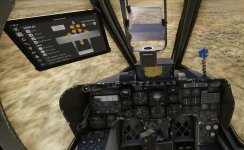modelr
SOH-CM-2025
Agreed - it's a really nice product with incredible detail! There's a lot of fun to be had with this little beauty. A little bit of a framerate hit for me, but not too bad.
I should have cross shopped to Orbx (vs. SimMarket) and saved $2.00 due to the Euro vs AUD vs. USD conversion rate, but oh well - $2.00 is half the price of a Starbucks.
Thanks for this info, Dave. I went to ORBX an bought it.

